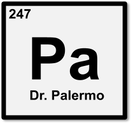Documents |
Labs |
Videos
|
|
|
Regents Core Curriculum
- Collision theory states that a reaction is most likely to occur if reactant particles collide with the proper energy and orientation. (3.4d)
- The rate of a chemical reaction depends on several factors: temperature, concentration, nature of reactants, surface area, and the presence of a catalyst. (3.4f)
- Some chemical and physical changes can reach equilibrium. (3.4h)
- At equilibrium the rate of the forward reaction equals the rate of the reverse reaction.The measurable quantities of reactants and products remain constant at equilibrium. (3.4i)
- LeChatelier’s principle can be used to predict the effect of stress (change in pressure, volume, concentration, and temperature) on a system at equilibrium. (3.4j)
- Energy released or absorbed by a chemical reaction can be represented by a potential energy diagram. (4.1c)
- Energy released or absorbed during a chemical reaction (heat of reaction) is equal to the difference between the potential energy of the products and the potential energy of the reactants. (4.1d)
- A catalyst provides an alternate reaction pathway, which has a lower activation energy than an uncatalyzed reaction. (3.4g) 30 Chemistry
- Entropy is a measure of the randomness or disorder of a system. A system with greater disorder has greater entropy. (3.1ll)
- Systems in nature tend to undergo changes toward lower energy and higher entropy. (3.1mm)






